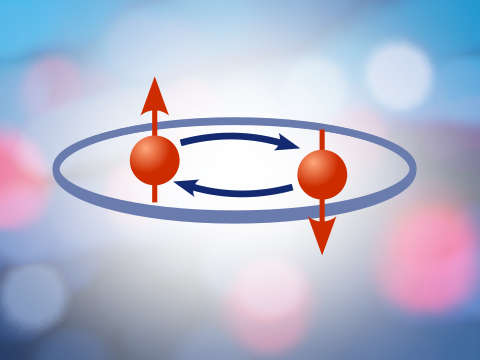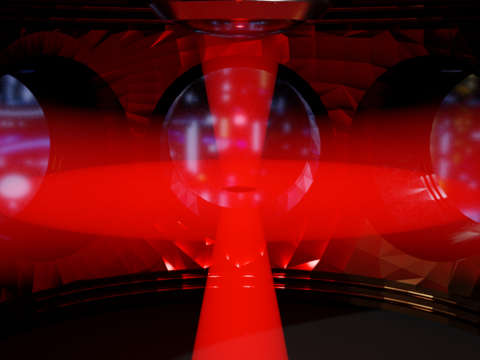Newsroom
Scientists at Heidelberg University have achieved a groundbreaking milestone in quantum physics: the creation of a Laughlin fractional quantum Hall state using just two ultracold fermions.
“The whole is greater than the sum of its parts” – this phrase often attributed to Aristotle captures the essence of one of the most intriguing phenomena in nature: emergence. When several parts of a physical system interact, new properties can arise that its single parts do not have on their own. A striking example is the collective behaviour of quantum many-body systems, which can produce novel effects like low-energy excitations carrying a fraction of an electron's charge.
Researchers from the group of STRUCTURES' principal investigator Prof. Selim Jochim at Heidelberg University, in collaboration with Philipp Preiss from LMU Munich, have made significant progress in understanding the emergence of fractional charges. By trapping and spinning a single pair of ultracold lithium-6 atoms in optical tweezers, they replicated the topological properties of this exotic state, previously seen only in bosonic systems. Using a tailored rotation to mimic the influence of a magnetic field, they achieved a strongly correlated atomic state described by physicist Robert Laughlin's wave function for the fractional quantum Hall effect, characterized by its collective and topological nature.
This accomplishment marks a crucial step in the study of emergence of topological phases of matter and paves the way to exploring more complex states, such as quantum Hall ferromagnetism and topological p-wave superconductors.
Further information:
- Publication 1: P. Lunt, P. Hill, J. Reiter, P. M. Preiss, M. Gałka, S. Jochim, Phys. Rev. Lett. 133, 253401 (2024)
- Publication 2: P. Lunt, P. Hill, J. Reiter, P: M. Preiss, M. Gałka, S. Jochim, Phys. Rev. A 110, 063315 (2024)
- APS Physics Viewpoint Article: Ultracold Fermions Enter the Fractional Quantum Hall Arena
- Selim Jochim's group


